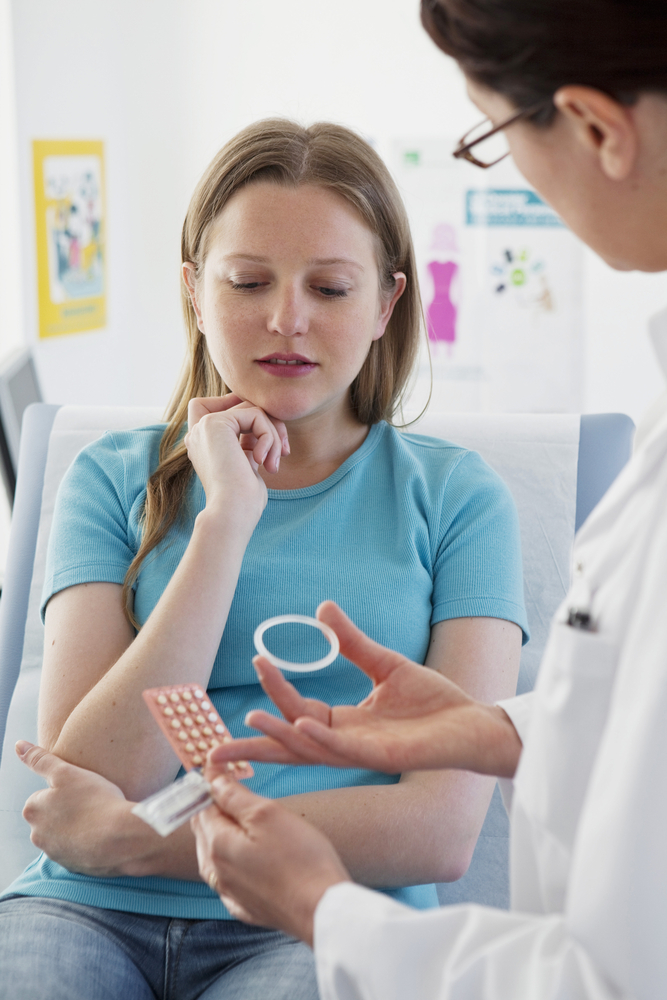Endometriosis can be a life-changing diagnosis. For some, it is a sense of relief to know why they are having the symptoms that they have. For others, it is a terrifying diagnosis that requires them to start researching and not stop until they know all they can about it. Birth control is said to be one way to control it. There are a lot of different options for birth control. Which is what we will discuss in this article. Perhaps you can find one that you think would be the best place to start. Remember, sometimes it takes several tries to find the right one.
The Theory
Endometriosis may be hormonal. We don’t know if it is the endometriosis that causes the hormones to go out of balance or if the imbalance creates the symptoms of endometriosis. We do know that endometriosis causes cells to grow outside of where they should be. Whether they migrate there or grow there is unknown. They act as they should which means they shed every month, and not at the same time. Hormones could help to slow the growth, prevent the cramping, and quite possibly decrease the amount of breakthrough bleeding. It may also help you to avoid having to get surgery.
Let’s Talk about Pills
Birth control pills come in many different formulas. It may be tricky to find the right pill for you. In fact, you may just need to try different ones until you find what works for you. This can take a while because you need to give each type at least three months before deciding that they won’t work for you.

They work because they will help regulate your cycle throughout your whole body. You have to take your pill at the same time every day for them to work. There are active hormones and then inactive. It can help to reduce cramps, regulate bleeding, and even balance out your mood.
The downside: you may feel sick to your stomach, get moody, gain weight, have headaches, or even lose weight. It all depends on your body’s reaction to the hormones. If you get the wrong one, you may find that your mood swings are impossible to deal with. You could have worse bleeding. Your cramps may get more intense. It is possible that your birth control pills could raise your blood pressure. This can be dangerous. If this happens, you will have to immediately discontinue the pills and find another option. There is no way of knowing until you give it a try. Different birth control pills affect each person a little different.
Then There is the Shot
The research is beginning to show that the shot may have more benefits than once thought. Yes, it prevents pregnancy. You absolutely do not have to worry about it. You get an injection once every three months. That is almost as simple as it gets. The best news is that it can help with almost every single endometriosis symptom there is. That means less pelvic pain, pelvic tenderness, less dysmenorrhea, no more painful intercourse, and a reduction of hardening and thickening of tissue. It may sound like the perfect solution, but there is always a downside.
The Downside:
You may need to give yourself two or more injections to see a difference. That means it could take up to six months. If you do have an adverse reaction, you are stuck with it for 3 months. You gain weight more significantly than other forms of birth control

Implants on the Arm
While they are relatively new, these bars are doing great things. You have one implanted in your arm. It isn’t that big. It is inserted into your arm with a syringe, like a shot. They last for years. Depending on the type they can last up to five years. They release the hormones on a steady basis. Most women say that it helps give them clearer skin. It can help to reduce the inflammation in the uterus which means that you will see a reduction in pain. It will also help to regulate your cycle.
The Downside:
There are two major complaints. The first is that it can make you gain weight. The other is that the implantation site can be irritated and red. It may itch. Also, you have to have it cut out when you are ready to remove it.
IUD Information
Finally, let’s talk IUD. There are two types. The hormonal and the copper IUD. The copper IUD has no hormones. It is not going to be as effective. In fact, the copper IUD may make symptoms worse, especially the cramping.

The hormonal IUD has been known to help reduce cramps and heavy bleeding. It releases hormones as needed and can last 3-5 years. If you have an adverse reaction, you can have it removed. You do have to have a doctor insert it and remove it.
The Downside:
IUD’s have been known to cause a significant amount of cramping and bleeding when they are inserted. They must be inserted inside your uterus. This means that your doctor will have to open your cervix. Yes, for some women it is painful. It can take up to a year to adjust to the pain, cramping, and heavy feeling. Once you do, you don’t notice that it is even there. Also, there is a chance that your IUD could accidently be flushed out of the uterus during a heavy period. You may not notice.

The Ring
The ring is a flexible device that you must put in once a week. You slip it in over your cervix for a week then remove it and put in a new one at the end of the week. You do this for three weeks and then take the fourth week off. It is hormonal.
Some of the best things about the ring is that it is known to help clear brain fog, cramps are greatly reduced, and bleeding is controlled. You may even see a reduction in abnormal cells.
The Downside:
The ring is not something you can do if you have high blood pressure or trouble with your blood pressure in the past. It is also one of the most expensive types of birth control options.
The Patch

The patch is a patch that you put on for three weeks and then take off for a week. It is worn on the stomach, pelvis, or lower back. The patch is like the ring. It releases the same amount of hormones. Between the two, more benefits are seen with the ring than the patch. The biggest downside is that it has been known to cause a rash at the site of the patch. This rash can be severe and uncomfortable.
Fertility
Endometriosis is not a condition where you can automatically assume you will never be able to have children. In fact, endometriosis was once believed to be cured by pregnancy. Most women did see an improvement in symptoms after they gave birth. For other women, they may choose a hysterectomy to end the fight with endometriosis. All of these birth control options allow you to return to your original fertility or possibly even improve fertility within three months of being stopped. Of course, this is something that you should talk to your doctor about before you make a choice.
It is always best to take your time and research each type of birth control before you begin. Write down all your questions and then talk to your doctor. Research is wonderful, but it cannot tell you how each option will affect you personally. The only way to know that is to give them a try and then keep all your appointments with your doctor. Keep your doctor informed.

Another great way to keep track of your symptoms is to write them down. Make sure that you include how you feel. Mood changes and sudden mood swings are not something that is normal. It is usually the first sign that something is not quite right. Also, changes in eating, or not being able to eat, should be noted. Your blood pressure may be affected so include that in your journal. Headaches, dizziness, or lack of balance may also indicate that you are having issues with your blood pressure. Any and all information can help your doctor to decide which options are not viable and which ones you could try next. While it would be nice to fine the solution on the first try, it is not to be expected. It does usually take several tries to find the answer.
Do not be discouraged. It is possible to live a normal life with endometriosis. It may take some time and some working closely with the doctor, but you can achieve it. Be honest with yourself and with your doctor. Be realistic in your expectations. If you can remember to do these things, you are sure to find relief from your endometriosis.





